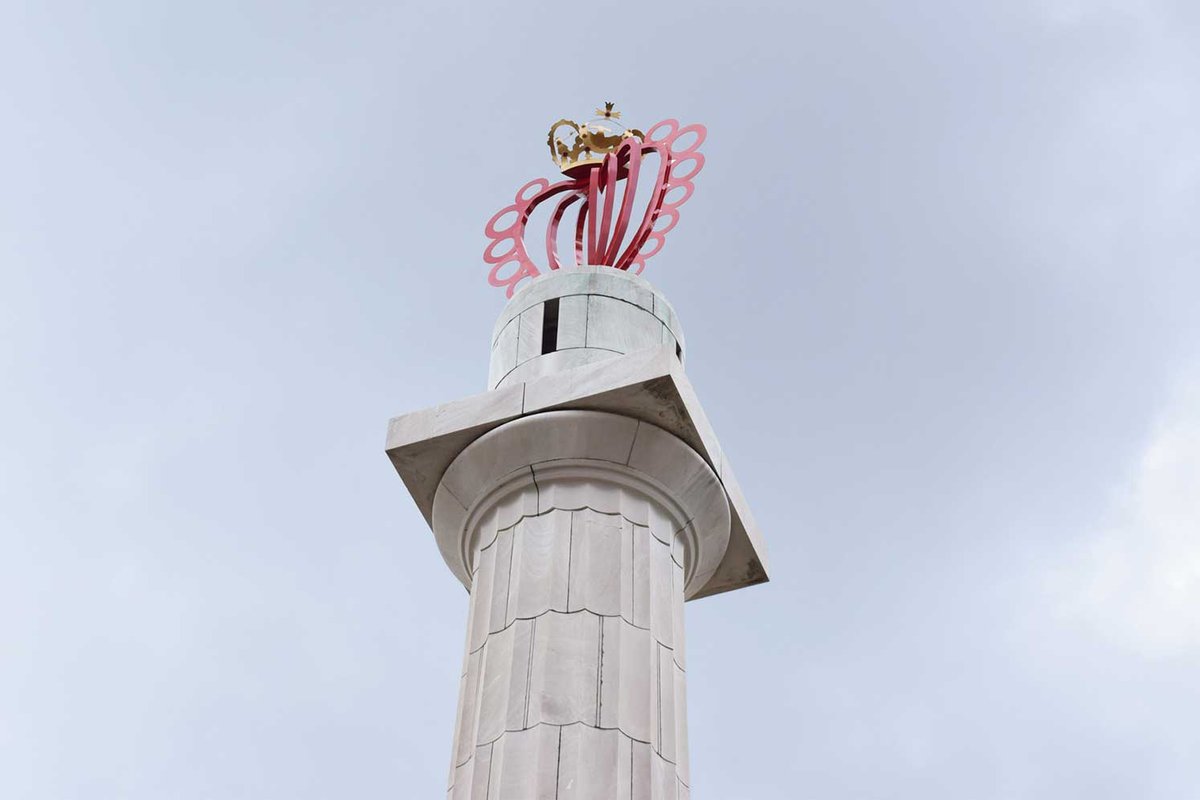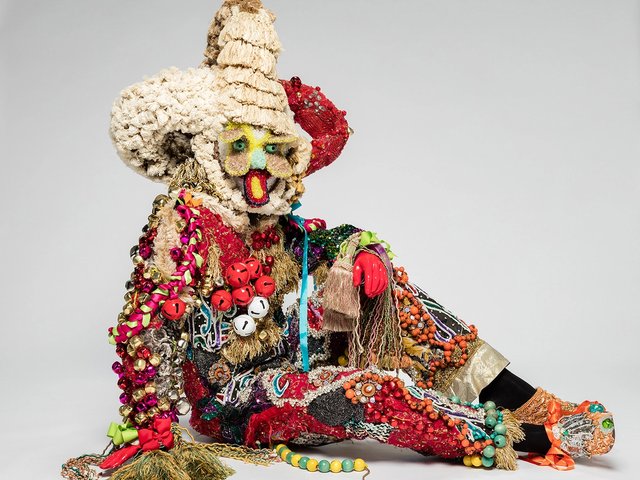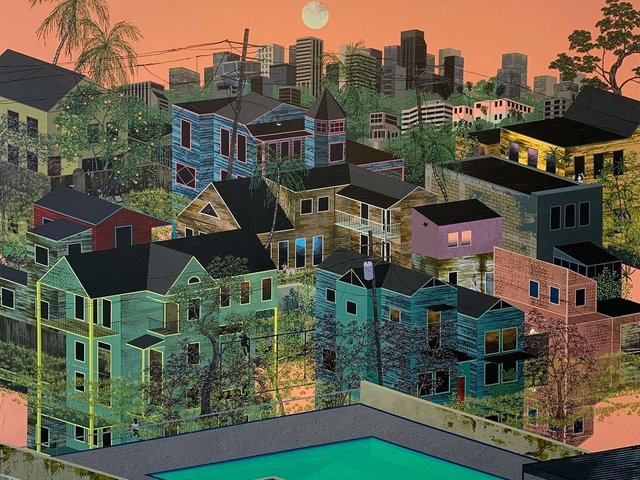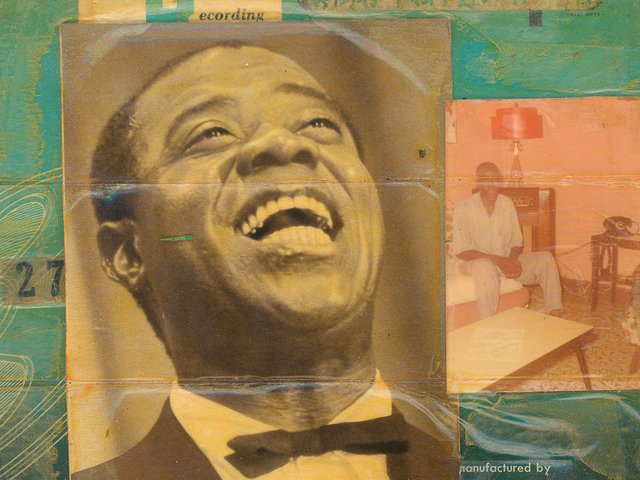For more than 130 years, a bronze statue of the Confederate General Robert E. Lee stood atop a 60ft-tall column at the centre of what became known as Lee Circle, a traffic roundabout in central New Orleans. That column had sat empty since 2017, when the Lee statue and three other Confederate monuments were removed by the city, but in late October the artist Raúl de Nieves transformed the space now known as Harmony Circle with a gesture of love. The Mexico-born, New York-based artist’s temporary intervention as part of the sixth edition of the Prospect New Orleans triennial (until 2 February 2025) includes a steel heart topped with a crown atop the column and four bright, beaded tree sculptures on the surrounding decorative urns.
De Nieves remembers visiting Lee Circle for the first time in 2007 and locals telling him “this is the most racist place in New Orleans”, so when the opportunity to transform the space for Prospect came about he “felt very intimidated but also rewarded, as someone who comes from an immigrant background and is a queer person of colour”.
Resetting the energy
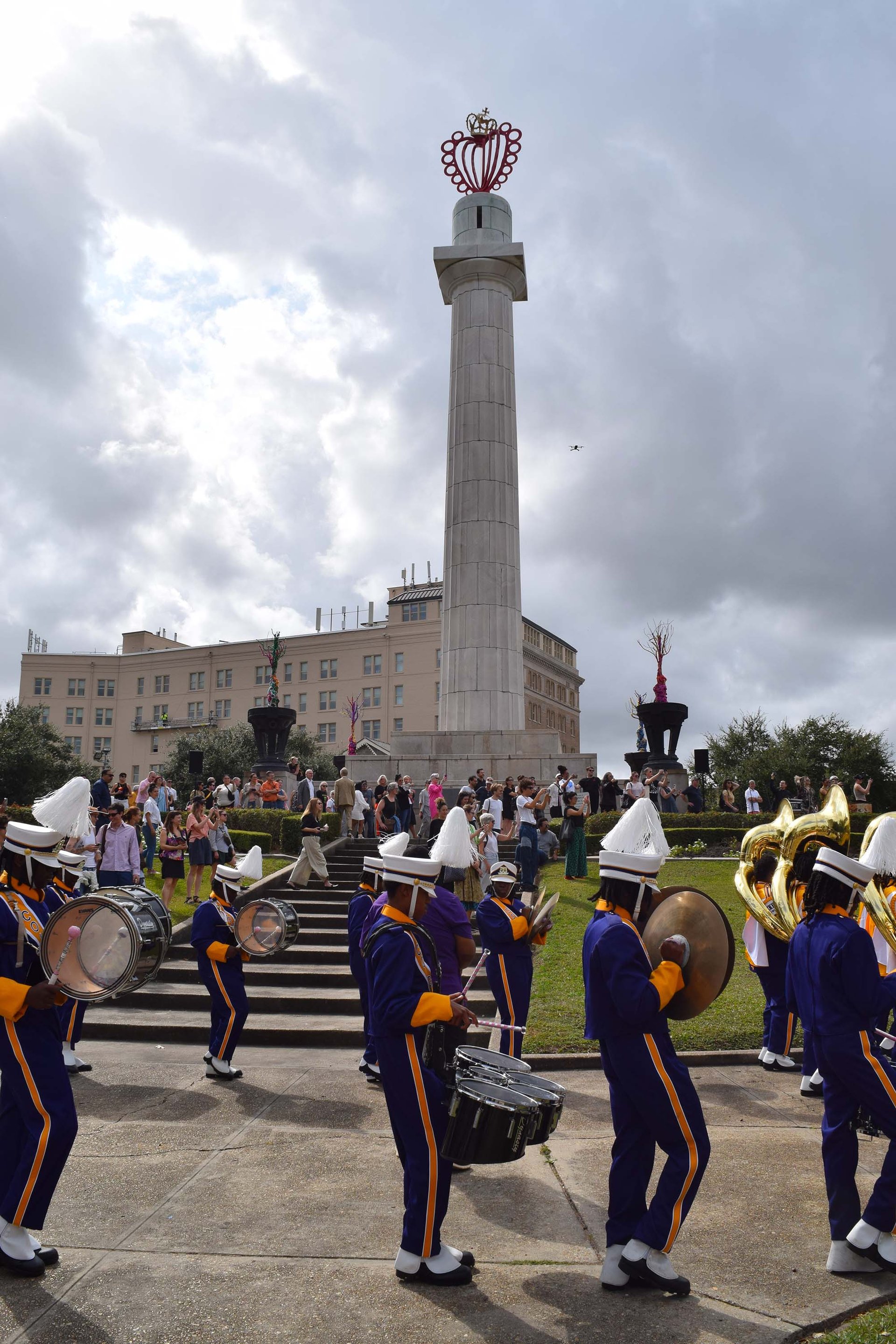
The Edna Karr High School marching band performs at an inaugural event for Raúl de Nieves's Harmony Circle commission on 31 October Benjamin Sutton
The motif of the Sacred Heart draws on De Nieves’s frequent use of Catholic iconography and Mexican folklore in his work; he worked with local fabricators to execute the steel sculpture. The trees are made with beads donated by the Krewe of Muses, the city’s first all-female Mardi Gras krewe. “Making the pieces in New Orleans became so important,” he says. “I really wanted whatever funding was provided through the triennial and the sponsorships to stay there and really allow for these people to have that moment and feel like they do belong.”
For the co-artistic directors of this edition of Prospect New Orleans, the curator Miranda Lash and the artist Ebony G. Patterson, De Nieves’s installation is partly an attempt at public healing and an example of what Harmony Circle could become. “We don’t want it to be a gravesite,” Patterson says. “We want to make it clear that this site has other possibilities and that other narratives can be built around that.”
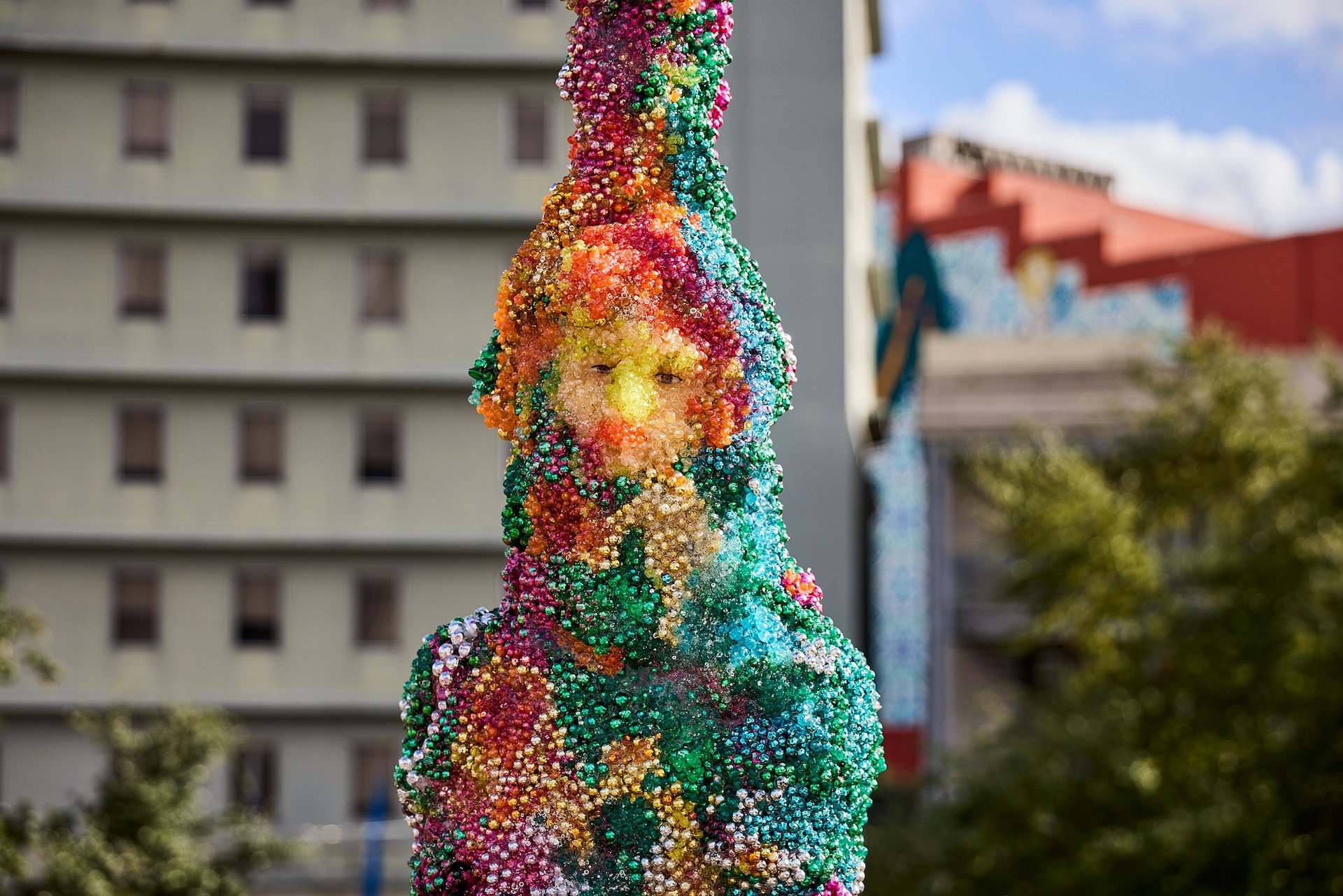
A detail of Raúl de Nieves's The Sacred Heart of Hours and the Trees of Yesterdays, Today, and Tomorrow (2024) Photo by Alex Marks, courtesy Prospect New Orleans
It is a “gesture of trying to reset the energy around that particular site”, Lash says. “We are doing it in full knowledge that there is a much longer and layered discussion to be had about what that site is going to look like.”
The work’s title, The Sacred Heart of Hours and the Trees of Yesterdays, Today, and Tomorrow (2024), acknowledges Harmony Circle’s history while also hinting at those deeper discussions about its future. “It isn’t just about me—it’s also about the larger picture of who decides what goes on there next,” De Nieves says. “Hopefully this continues to remind people, in the moments when maybe they don’t feel like they belong, that there’s something we can do about that.”
- Prospect New Orleans: The Future Is Present, the Harbinger Is Home, various locations, New Orleans, until 2 February 2025


